















adolfodarriba@
observatoriolascasqueras.es


41º 40' 00" N
3º 30' 00" W
930 Mts

From my beginnings in 1.991 to 1,999 it hardly observed from Valdelaguna (Madrid) to about 35 Km of Madrid, to 740 meters of altitude.
With the step of the years, the light contamination on the part of Madrid and Aranjuez to about 25 Kms. of distance, it had become untenable and I also observed inside an urbanization adding him but lights of beacons and neighbors' lights, and I could only look toward the Northeast to the Southeast, without being able to lower but there of -10º of South decline, but even so I ended up doing at first sight until the magnitude 7´2 in the best nights and my magnitude limit with the telescope, of 15´0 to at 15´5. It used a telescope C8-SP of 203 mm. at F/10 of Celestron, with German mount and controls of slow movement. The oculars were of 30 mm. (68x) and 12´5 mm. (162x).
Now I observe from Peñaranda de Duero (Burgos) about 17 km of Aranda de Duero a height of about 930 meters. At first it thought that it was a site really very good, so that before it observed from a very bad site. With observing I have realized that is a very humid site with continuous fog that a very considerable increase of luminance contamination of all the towns of but the lights of Aranda de Duero causes around. And in summer I have the normal problem of calima. I at least have a very ample horizon in all the directions. Even so, my normal magnitude is of 7,0 and how exceptional cases, I have arrived up to 8,3. The magnitude limit with the telescope C8-SP in a normal night is from 15,0 to 15,5. If the night is very good, of 16,5 to 17,0.
The that more it impresses me in a very good night it is the brightness of the night sky. It is as if there was Moon when there is not it. I have the sensation of an increase of the light contamination that arrives until the Zenith, when the reality is that it is a very dark and clean night.
Now I use a Celestron C14 XLT with a mount EQ6 Pro Goto. For visual it is extraordinarily precise, even knowing that the optic tube is at F/11. To this configuration, I would give him a notable punctuation. The biggest problem is the vibration caused by the wind and that the OTA doesn't dispose to cooling fan for OTA. The vibration is not caused by the lack of robustness of the mount. It is because we are working to many increases. I am convinced that in other more expensive mounts, it will pass them practically the same thing.
As visual amateur astronomer, I have opted for an observatory of Roll Off Roof, to have the whole sky. That if, the wind is it that more I worried, and it is for what I have carried out the construction a little with the walls higher than my stature. Also, I reduce the sensation of cold and the telescope is balanced immediately with the exterior.
I lose horizon, but I win in comfort. If the wind gives him of full to the OTA, the image won't stop of trembling. And if the wind gives me to my, the winter cold will take me to house before time. It can reach the -10ºC easily. In fact, it is the coldest area in all Spain. it has been reached the -21ºC and I were 4 days followed with -19ºC. In fact, I observed an atmospheric phenomenon, called Pilar Solar, but at night that only and very rarely, it is given in the arctic.
The day temperature winter is of 5º C
The night temperature winter is of -15º C
The day temperature summer is of 35º C
The night temperature summer is of 20ºC




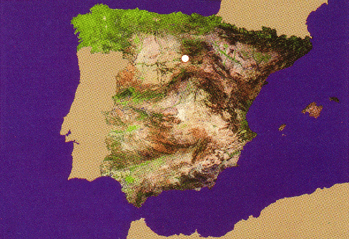














































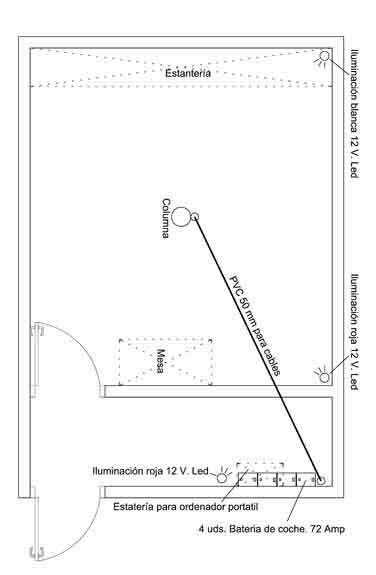
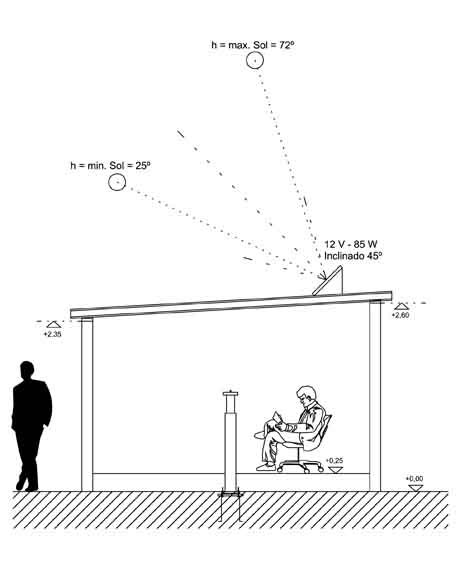
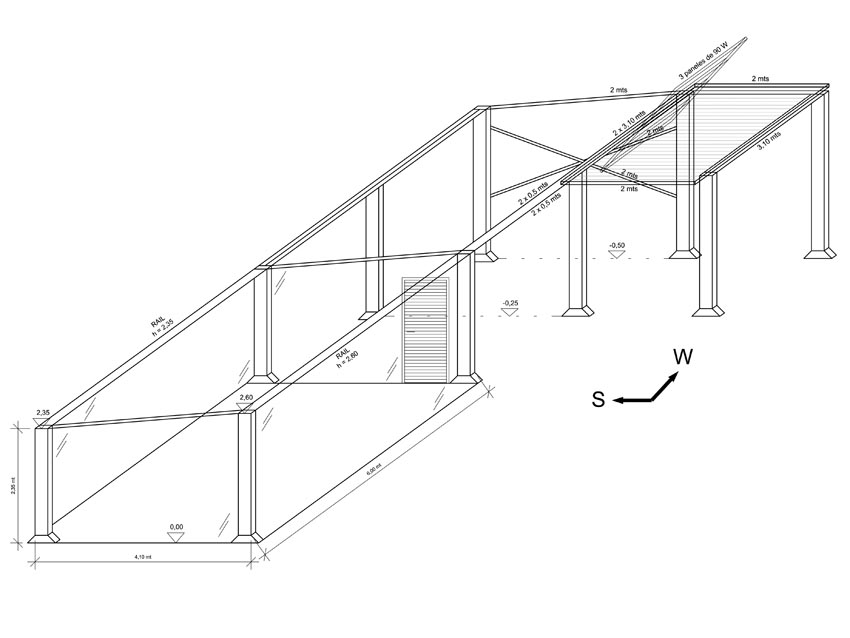
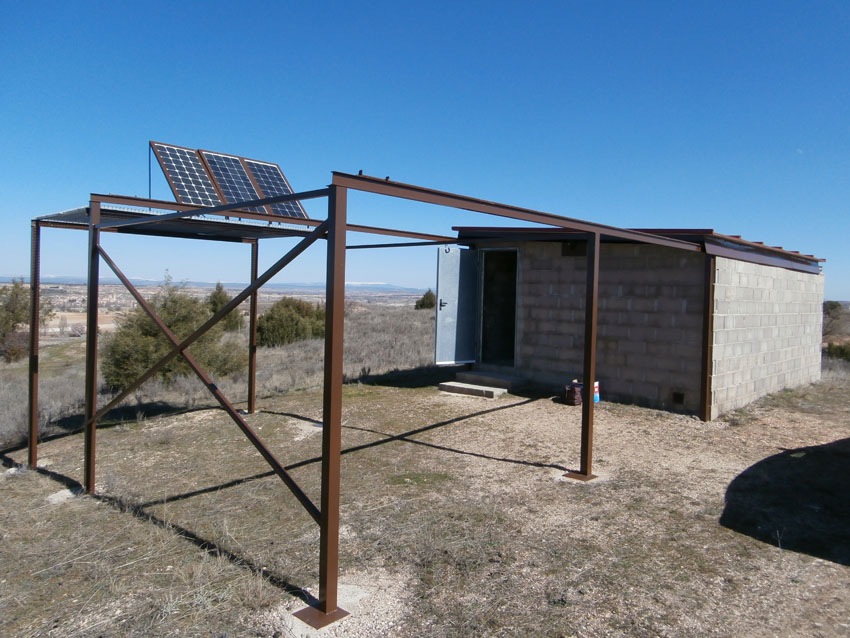
|
Electric consumption: EQ6 Pro Goto: 1,5 Amp Portable computer: 1,6 Amp Heating tape for lens schmidt: 2,5 Amp Heating tape for lens schmidt: 2,5 Amp Illumination Led observatory: 0,5 Amp TOTAL: 8,6 Amp |
I prepare of: 4 Solar panels of 90 W 2 batteries of 250 Amp Regulator of 40 Amp Investor of 12V to 230 V of 300 W Investor of 12V to 230 V of 1.000 W |

|

|